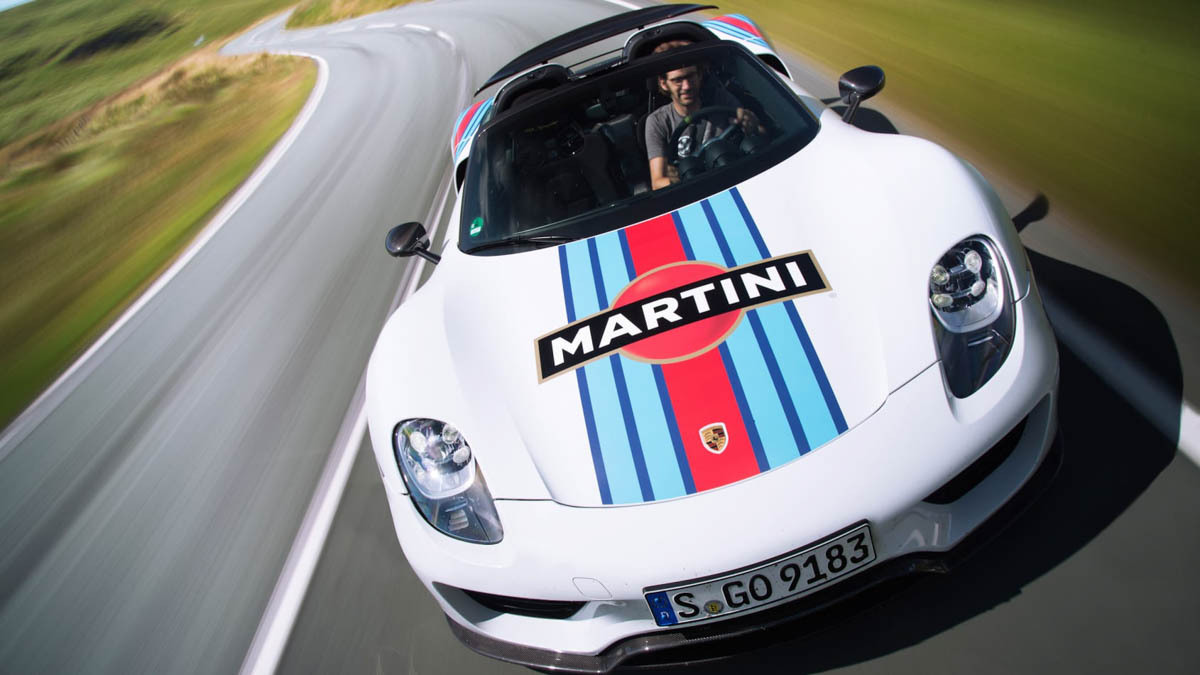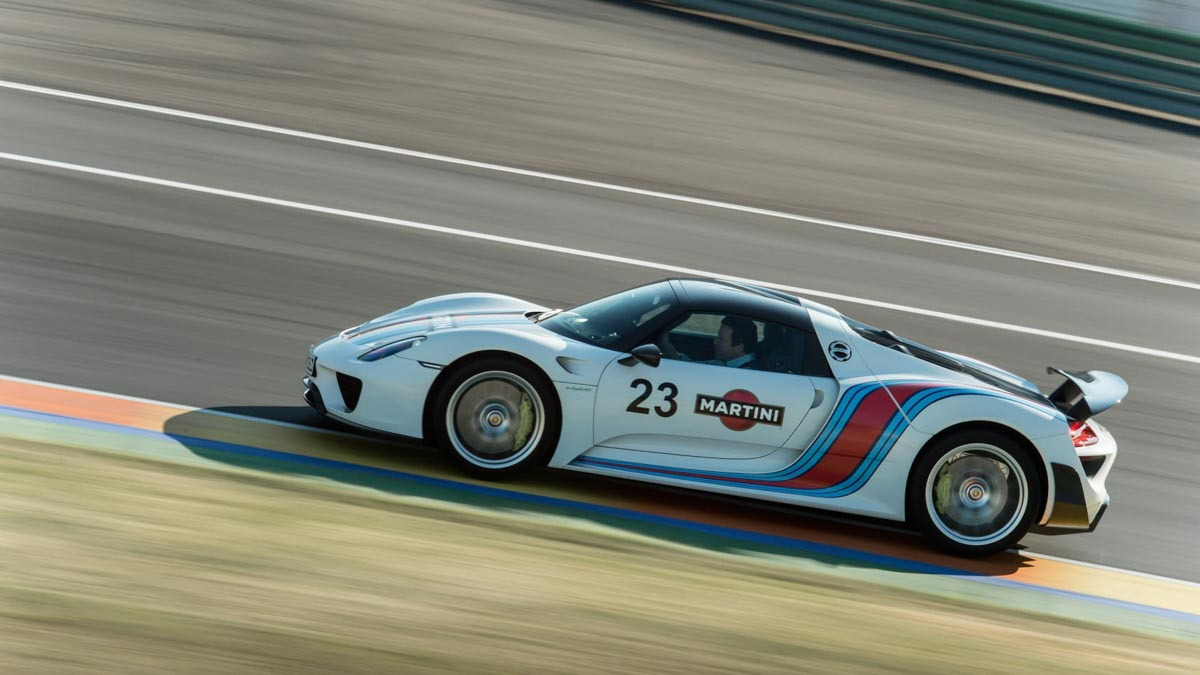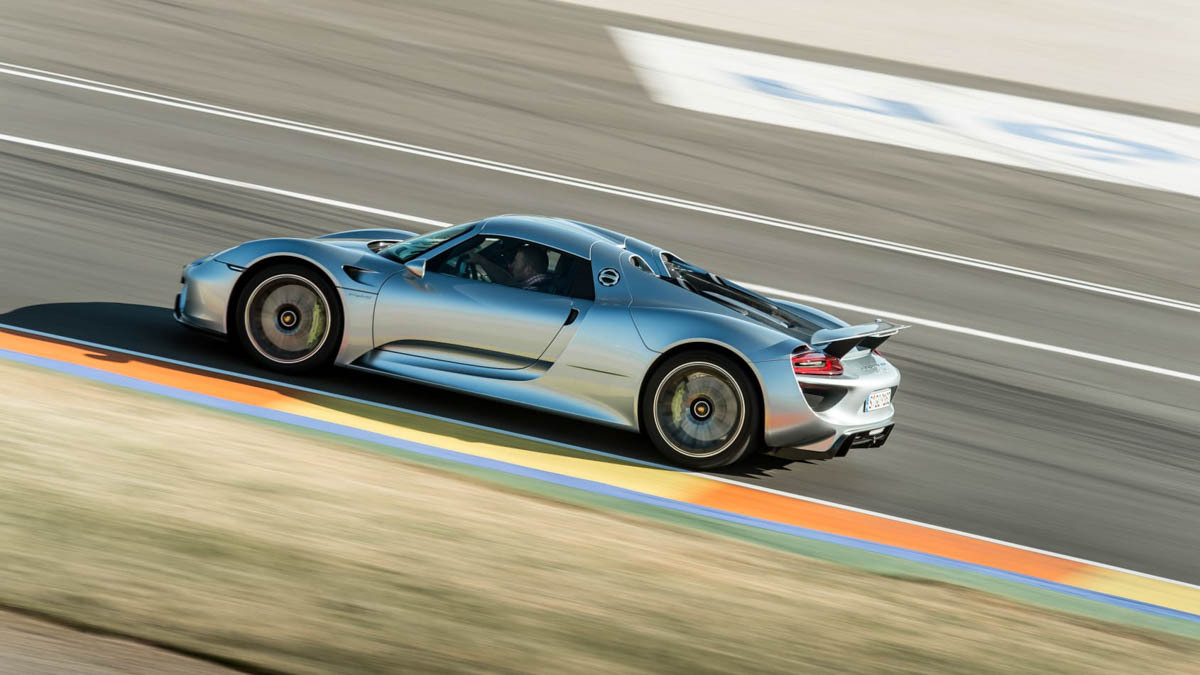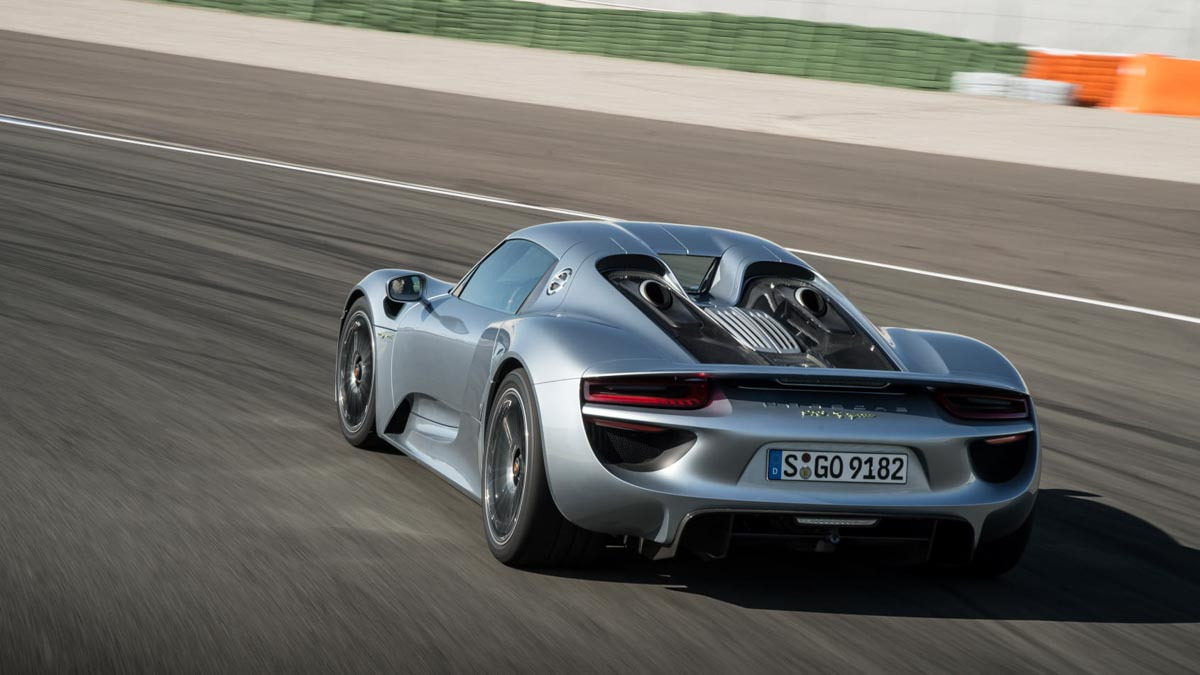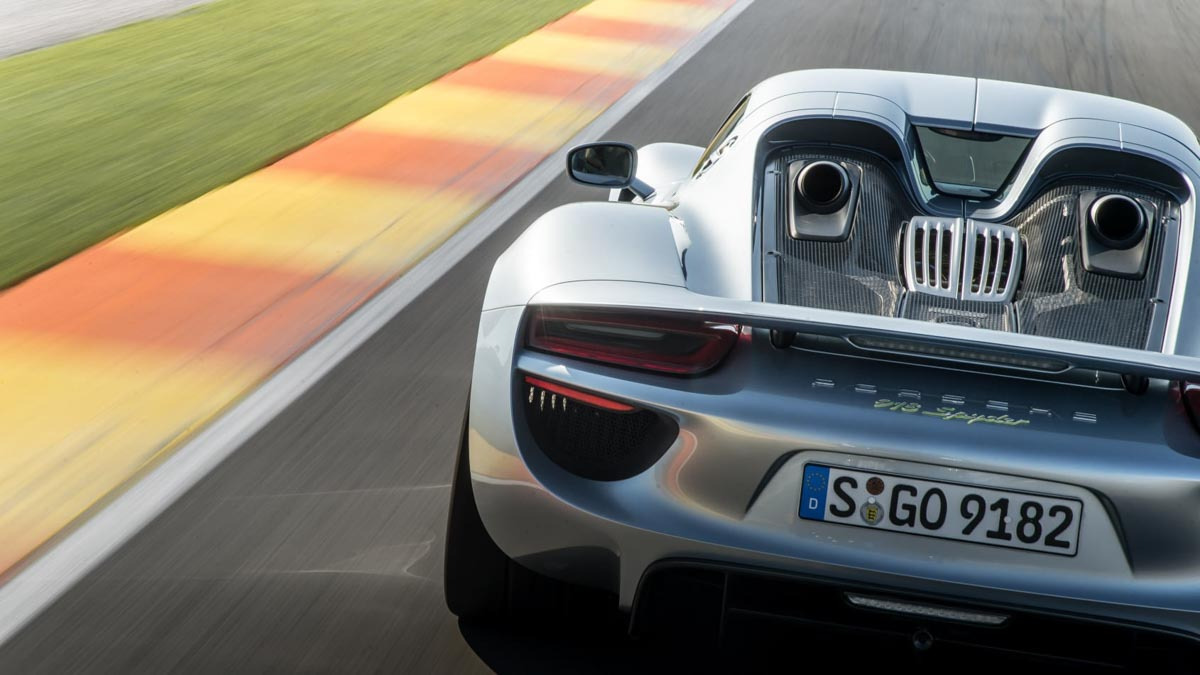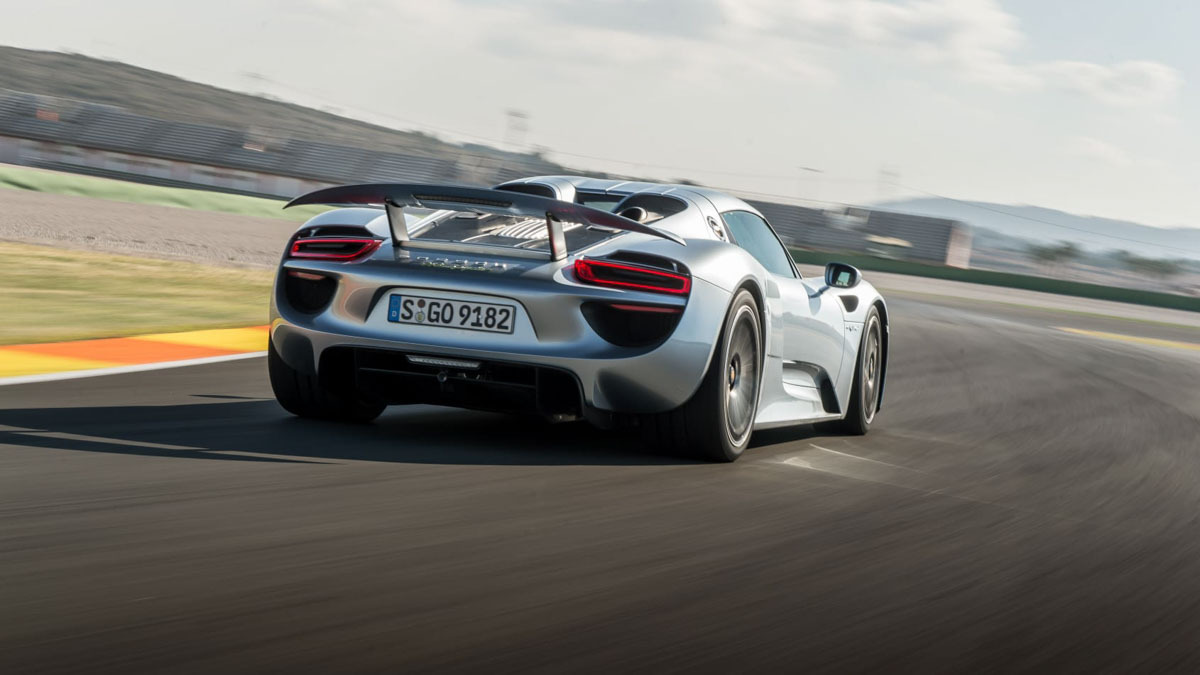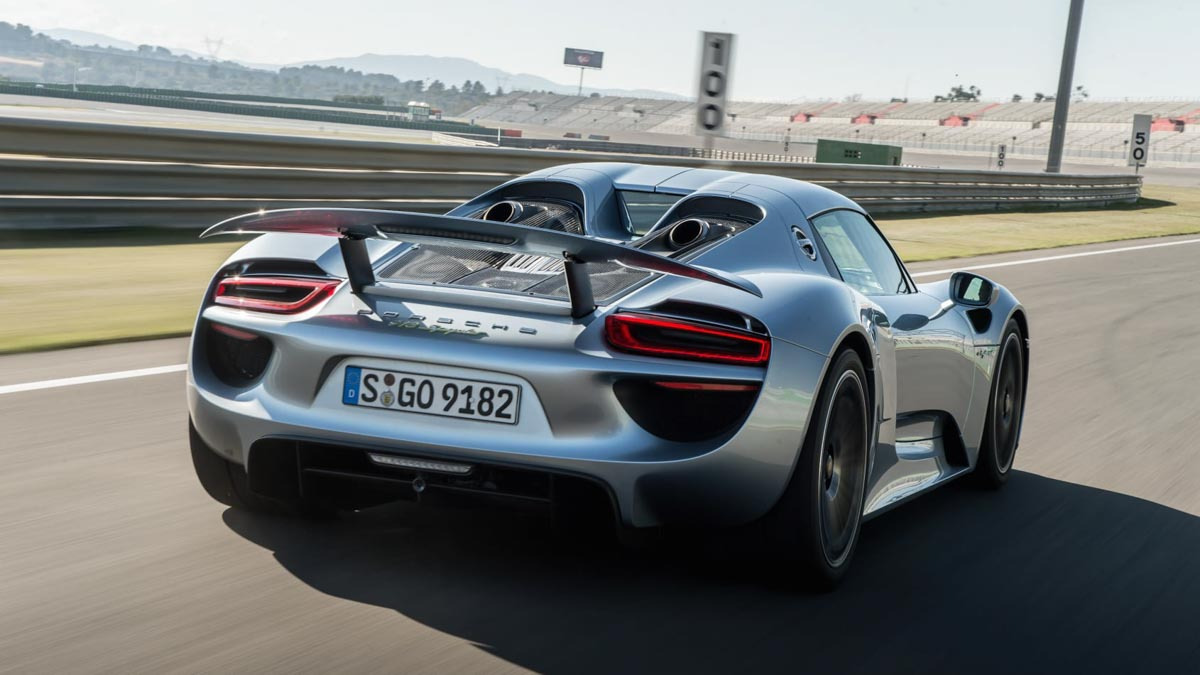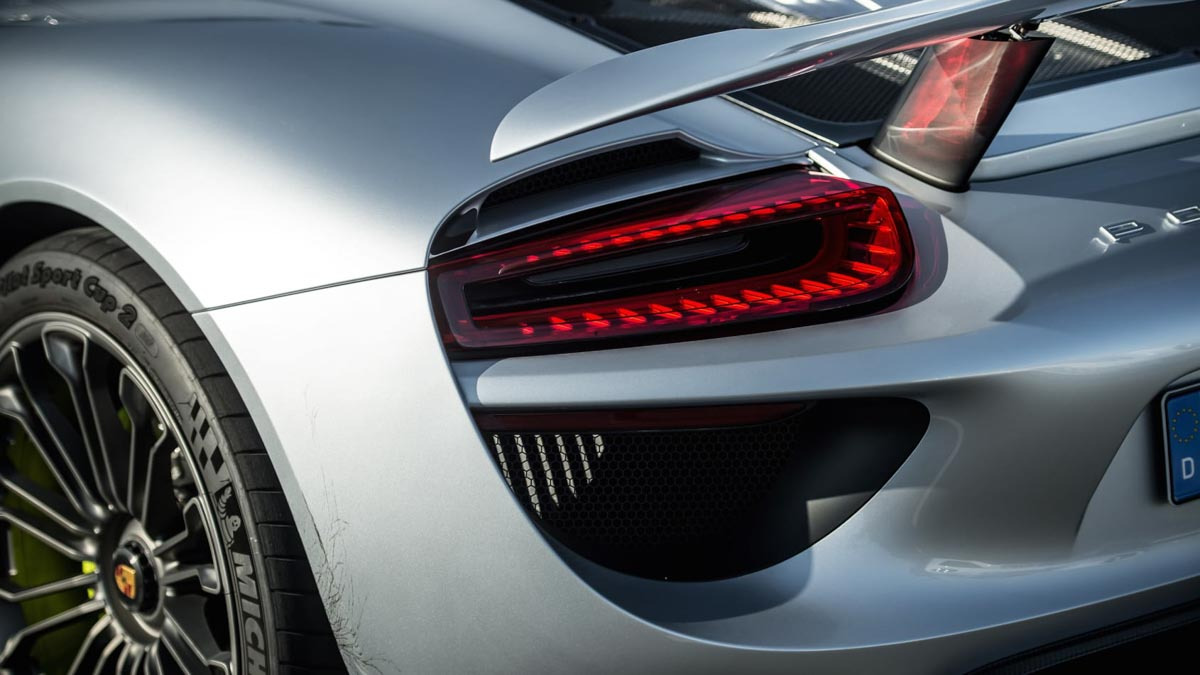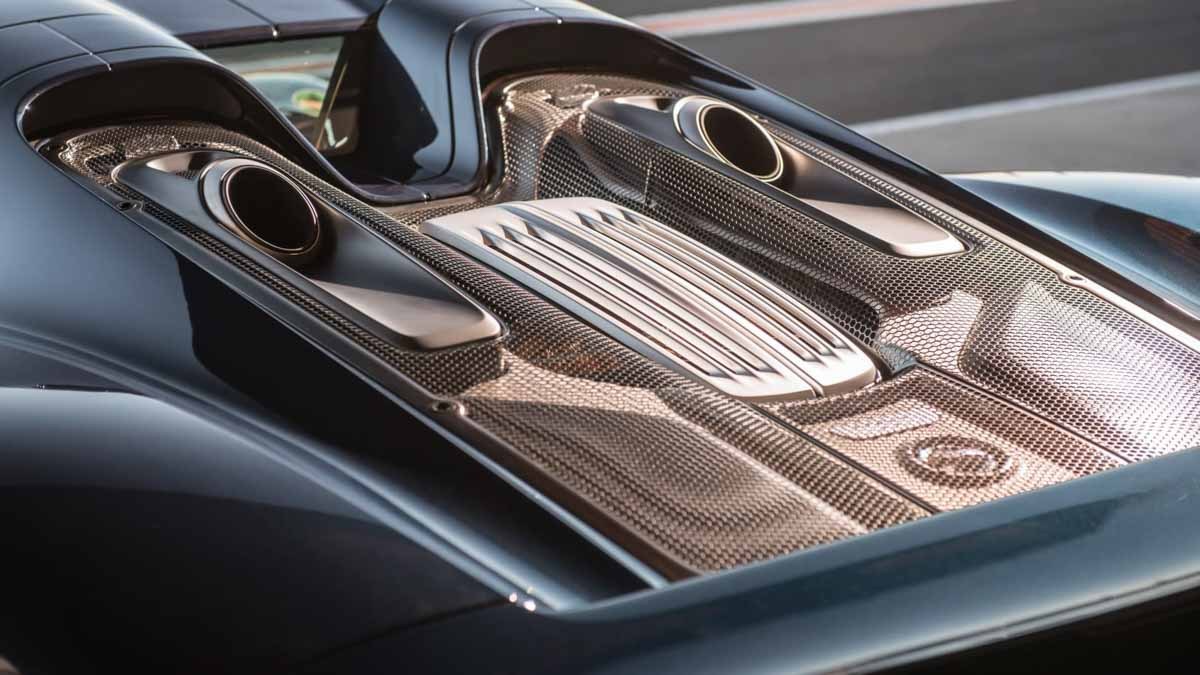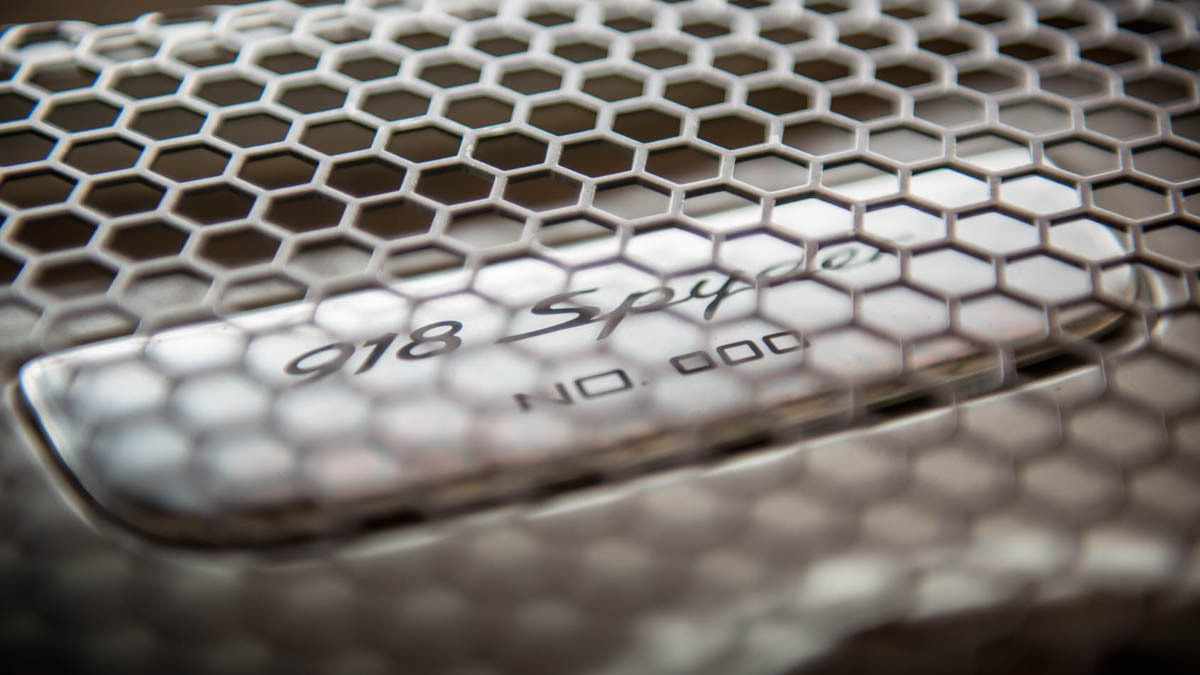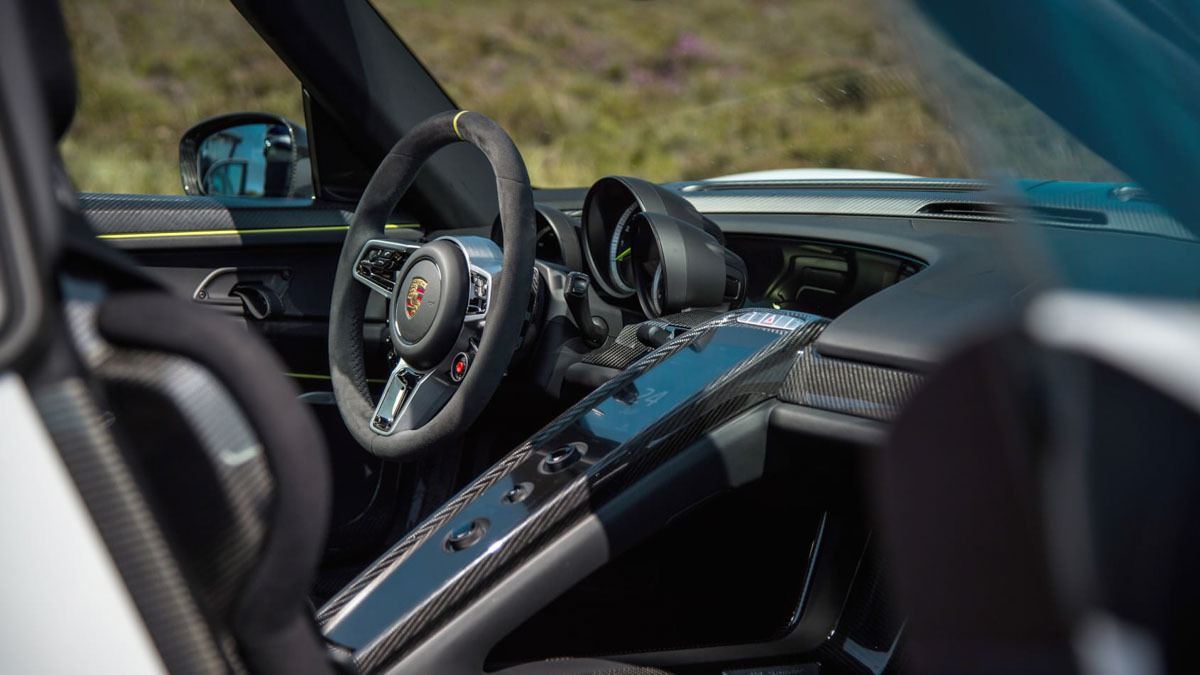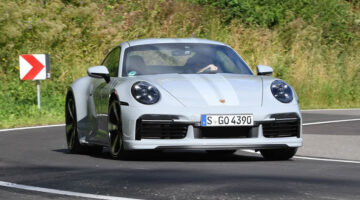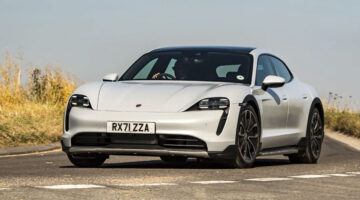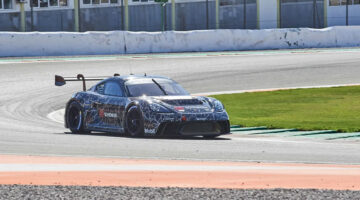A paragon of technology, but huge fun at the same time
PRICE from $1.05
It’s almost impossible to talk about the Porsche 918 Spyder without comparing and contrasting it with the McLaren P1 and LaFerrari, the trio making up the so-called holy trinity of hypercars. The Porsche is sometimes seen as the most understated of the three and it is certainly the cheapest (if you can apply that word to something with a list price of over $750,000), but in many ways it is actually the most impressive.
It has the most useable of the hybrid modes and yet also has the most spine-tingling soundtrack when its naturally aspirated 4.6-litre V8 kicks in. It is also the most conspicuously high quality product, and although it’s the least powerful and heaviest it also has, by some margin, the most torque. In short, we adore the 918 Spyder.
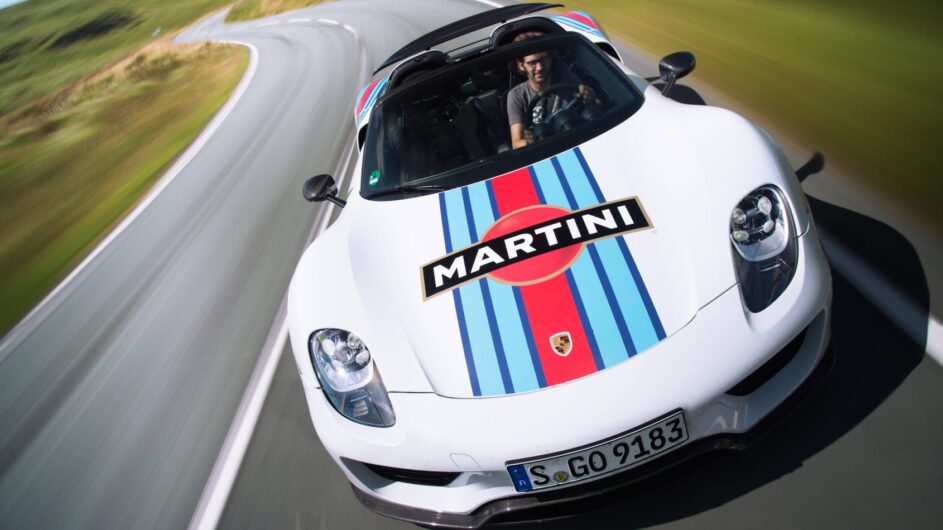
Prices, specs and rivals
A bargain at $972,000 the German hypercar certainly wasn’t. Up against the McLaren P1 (around $1.08m) and Ferrari’s million-pound-plus LaFerrari, the 918 was outpriced, but certainly not outgunned. Supply and demand though has rendered these RRP’s obsolete, and values for all three cars have skyrocketed since.
A sub $996k 918 was seldom specced. Most ticked the little box (with a big price) for the Weissach Package, taking the total to $1.06m. In true Porsche custom, parting with more got you less – at least in terms of weight – a good thing here. The roof, rear wing and windscreen frame were left unpainted to show off the 918’s composite construction. Magnesium wheels reduced unsprung weight, while extra aerodynamic flaps increased downforce and a set of six-point seatbelts better secured the driver and passenger in place. The seventy-odd thousand pounds worth of extra kit trimmed three seconds from the Nordschleife laptime, which was reason enough to spend the extra for the buyers seeking outright bragging rights in the Porsche 918 owners club.
Assuming the flagship Porsche and fellow holy trinity members would mark the bleeding edge in automotive realm for years would have been a fair assumption to make. But since their conception, Bugatti’s Chiron has arrived , the 1000bhp/ton Aston Martin-Red Bull 001 has been confirmed and the F1-engined Mercedes-Benz hypercar is on the horizon. The fleeting nature of ultimate performance has been brought into sharp focus.
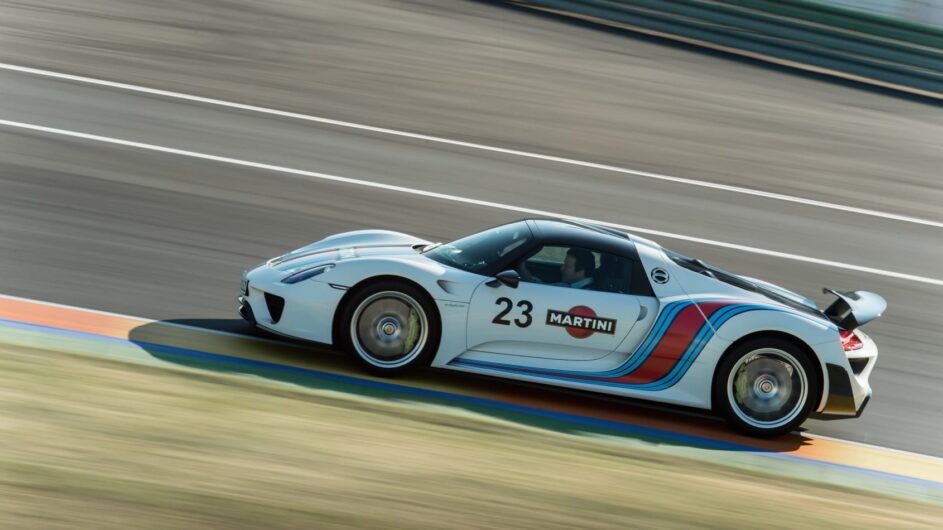
The comparison metric of price is a peripheral one once you’re knocking on the $1.25million door – owners of any the holy trinity (normally they proprietors of all three) can likely spare a cool $3.1m (Bugatti) or $3.74m Aston Martin Valkyrie as well.
The Chiron is a whole BMW M5 more powerful than the 918, producing 1479bhp. Unlike the Veyron, surgically precise but ultimately sterilised, the Chiron divulges genuine feedback and feel to the driver, so solely a high-speed, luxury tool it is not.
The new Aston Martin Valkyrie car will be elevate performance into a new universe. Penned by the hand of Formula 1 aero-wizard Adrian Newey and a powered by a naturally-aspirated V12 engine, the aim is track performance to worry a LMP1 car. The thought of such abilities, exploitable ones at that, crammed into a road car is difficult to comprehend – at the time of the McLaren F1, people thought no supercar would ever get faster, but it’s hard to imagine any road car in the future being able to out-lap the new Red Bull road-going racecar.
Performance and 0-100 time
Porsche is famously conservative with its performance claims, so when it lists a 0-100kph time of 2.6sec for the 918 Spyder, it gives you some idea of just how monstrously quick it is. For comparison, McLaren claims 2.8sec for the P1 and Ferrari rather coyly just says under 3.0sec for the LaFerrari. The other acceleration times quoted for a 918 are 7.2sec to 200kph and 19.9sec to 300kph. It will top out at 344kph – a whisker behind the claims for the McLaren and Ferrari.
The reason for the Porsche’s sprinting ability is a combination of its traction thanks to four-wheel drive and a monstrous amount of torque. While the McLaren and Ferrari might boast slightly higher power figures, the 918 completely dominates them with its torque. Although the others put out an identical and not inconsiderable 664lb ft each, the Porsche has a combined output of 944lb ft from its electric and petrol motors.
What this means is that on the road the Porsche feels incredibly muscular in its delivery, pinning you to the seat and holding you there with almost seamless shifts. It felt every bit of a match for the P1 when we had them both together in Wales, because although the turbocharged McLaren was mighty once it was into its stride, it almost felt slightly laggy by comparison out of the corners. Everything is relative of course…
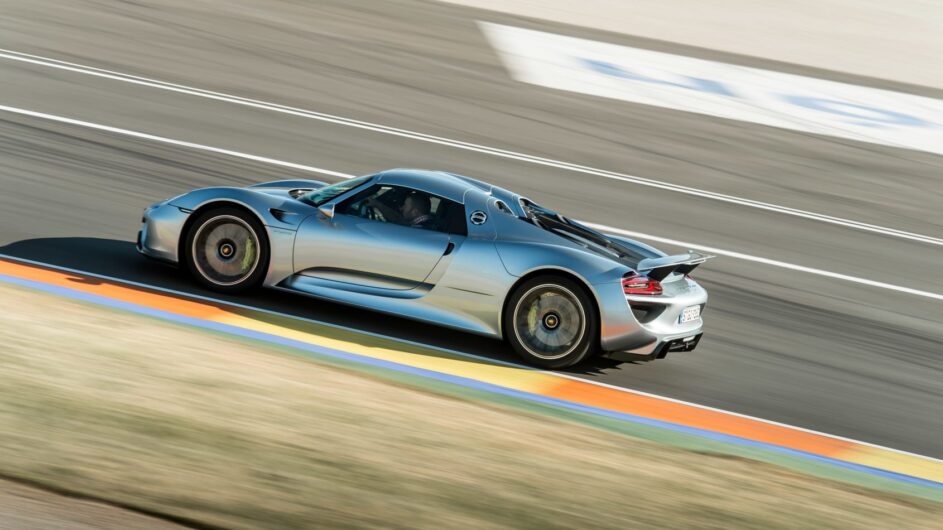
Perhaps the LaFerrari feels even more crazily fast and offers similar response thanks to its big normally aspirated V12, but with rear-drive only you tend to be more circumspect with the accelerator. In short the 918’s performance on the road is a match for anything – P1, LaFerrari, Bugatti Veyron SuperSport. On the track it’s supremely fast too and thanks to its inherent traction and balance it’s brilliantly exploitable.
Ride and handling
Other than the slight conceptual absurdity of using a hypercar as a daily runaround, there is really nothing dynamically that would stop you from using it everyday. It really does feel that manageable.
Of course, it is also capable of simply silly cornering speeds should you wish. The steering is remarkably weighty, but this gives you great confidence going into corners allowing you to push the front end really hard right up to the point where you get back on the throttle and lean on the four-wheel drive to fire you out of the corner. The whole car feels heavier than the P1, but in a solid rather than cumbersome way and the scintillating throttle response adds to the sense of agility.
On track there is a bit of understeer to work with on the way into corners, as you might expect, but you can also easily push through this and provoke the car into oversteer. Jethro Bovingdon noted that despite all the technology, working away underneath you with torque vectoring, four-wheel drive and electrical assistance, it nonetheless feels utterly transparent and dynamically really quite simple to read. Like the very best Porsches, it is all at once immensely stable yet also hugely adjustable.
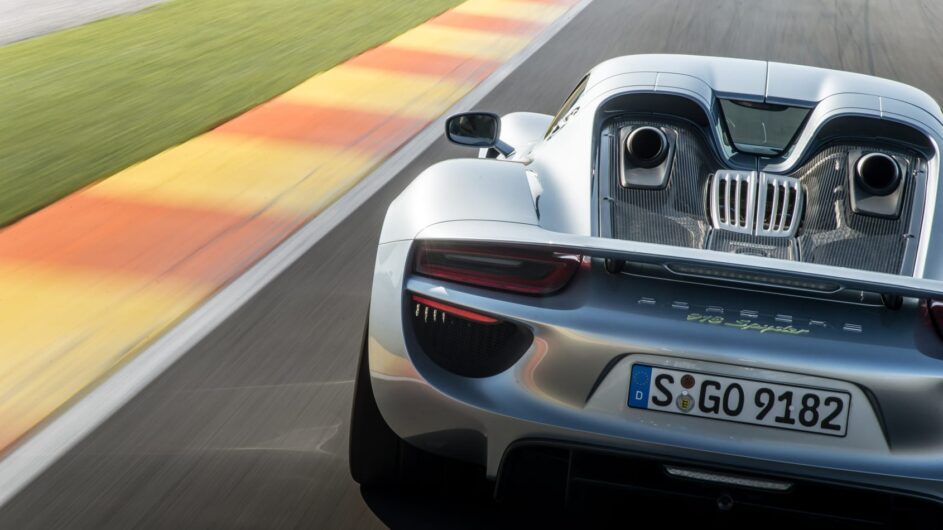
The ride is firm but no more so than, say, a GT3 and the 918 feels super stable and secure. For the most part you’ll leave the PASM dampers alone but even in their stiffest setting the 918 breathes with the road. Its electric steering is gorgeous – quite heavy but with more texture and subtle shifts in weight as you unravel a road than you’d ever find in a 991-generation 911. But like the Carrera GT before it this wide, mid-engined machine has quite amazing response. You feel the stiffness of its structure every time it changes direction with instant precision and because the dampers work so cleanly and decisively. Everything feels immediate but almost honey-coated so there’s no jumpiness.
Start to drive more quickly and the 918’s almost invisible technology continues to give you all the tools necessary to drive quickly in total confidence without feeling unnatural or forced. You don’t really feel the four-wheel steering but benefit from the amazing agility it brings, the torque-vectoring function on both axles makes understeer a total non-issue on the road… you just turn and those Cup 2s go right where you ask. Even mid-corner when you think you’re pushing hard and then a corner unexpectedly tightens, the 918 simply responds to your request for more lock with ease.
evo Tip
Many owners chose to have the Weissach pack fitted. This costs an extra $70,000 (give or take, depending on the exchange rate) but reduced weight and added aero addenda. For reference the weight dropped to 1634kg (from 1675kg), which in turn increased the power-to-weight ratio to 544bhp/ton (up from 531bhp/ton). The claimed top speed also went up by a single kph to 346kph.
It’s no longer possible to buy the Porsche 918 Spyder brand new, but used examples are now, predictably, changing hands for far greater values than that original circa-$996k price tag; $1.49million now seems to be the norm. For 918 buyers money will never exactly be tight, but it does make the $0.62m-$0.75m of the 918’s predecessor, the Porsche Carrera GT, look like something of a bargain.
By way of comparison, the 918 Spyder’s rivals are currently commanding even higher values: at least $1.87million for the McLaren P1, and no less than about $3.11million for the LaFerrari.
Engine and gearbox
The title of this section doesn’t really do the 918 Spyder justice. Much like in F1, perhaps we should describe its drivetrain as a ‘power unit’ as it’s made up of a 4.6-litre V8 with 599bhp at 8700rpm and 398lb ft at 6700rpm, supplemented by an electric motor for each axle. The internal combustion engine and rear-mounted electric motor drive through a 7-speed dual-clutch PDK transmission with electronically controlled limited-slip differential, while the front electric motor is single speed and decouples at 265kph. The total combined output is 875bhp and 944lb ft. The liquid-cooled 6.8kWh lithium-ion battery sits between the engine and the carbon fibre passenger cell. The 918 Spyder can be plugged in but also charges through regenerative braking with impressive speed. Its electric range is 29-kilometres and it can be driven in E-Power mode at up to 150kph.
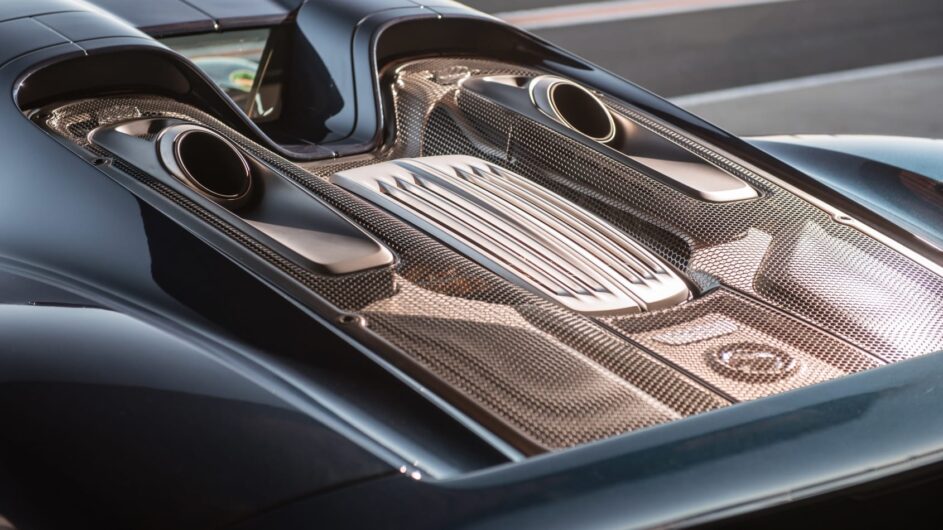
The first thing that strikes you with the 918 Spyder is the ease of use. There is something rather wonderful about being able to leave early in the morning, in a 875bhp car, completely silently. What’s more, there is a useful 32 kilometres range on fully electric (compared to just 10 kilometres in the P1 and nothing in the LaFerrari). But as impressive as the two electric motors – one 95kW on the front axle and another 115kW on the rear axle – are it is still the internal combustion engine that steals the show. If you’ve got the roof off, then the first time the V8 kicks in it scares the life out of you because the top exit exhausts are not that far behind your head. It is, however, an utterly glorious sound to be scared by. Shrill and angry yet piercingly beautiful it makes the car’s list price seem almost reasonable.
The seven-speed PDK gearbox is also a thing of wonder. The shifts ramp up through the driving modes to the point where they take place so quickly that you almost question whether they happened at all. The paddles’ travel is that of a micro switch, but it suits the incredibly rapid nature of the ratio swapping.
It’s a fascinating drivetrain on paper, then. However, the reality is more impressive still. The 918 has several driving modes, E-Power, Hybrid, Sport, Race Hybrid and Hot Lap, which gives ultimate performance but drains the batteries more quickly. We were concerned before driving the 918 that it would often be left devoid of electric power and hence a good chunk of power short of its full capability unless regularly plugged in. But in several days of driving on road and track the 918 was always operating at full speed – driving through a town in electric mode alone might reduce the range to almost zero but just a few minutes in Sport would see the charge quickly replenish.
It might sound odd to say it of a Porsche supercar… but the 918 is superb when utilising electric power alone. It’s still genuinely quick (0-100kph in 7-seconds) and it feels relaxing to just pootle through little villages in silence. Of course you want to know about the 918 at full fury and it’s quite extraordinary. That V8 is so, so sharp and sounds incredible as it rips up to 9150rpm. It sounds like a pure racer, but the massive low and mid-range hit gives it the feel of a car with twice the cubic capacity. In combination with the fastest, most incisive PDK ‘box you can imagine it makes for relentless and overpowering performance. The numbers might suggest otherwise but the Porsche, for the most part, feels faster than even the P1 thanks to its instant rush of torque.
evo Comment
‘The Porsche feels so planted, so calm and so secure, you can exploit its unhinged violence more frequetly and for longer. The steering is much heavier than a McLaren P1’s and feels a bit less alert about the straight-ahead. But it has great feel and precision on lock and lets you know exactly what the front end’s doing which, in turn, engenders a feeling of absolute confidence the P1 never quite nails.
‘It’s an ambitious fusion of race-bred powertrain and rearl-world competence wrapped up in a modern-day reinvention of the sublime Carrera GT’ – David Vivian, Contributing Editor
Interior and tech
Several 918 firsts have since appeared on other Porsches. The smaller 360mm diameter wheel for example has since been used in the GT3 RS and has subsequently found its way into the second generation of 991s. The rotary switch in the wheel that swaps between drive modes is also now to be seen gracing ordinary 911s. Finally the gorgeous seats were subsequently adapted for the GT3 RS and Cayman GT4. Nonetheless, if you step into a 918 Spyder today, you will still be amazed by the quality and sense of exclusivity. The central architectural beam that houses a screen and various ancillary controls is just stunning.
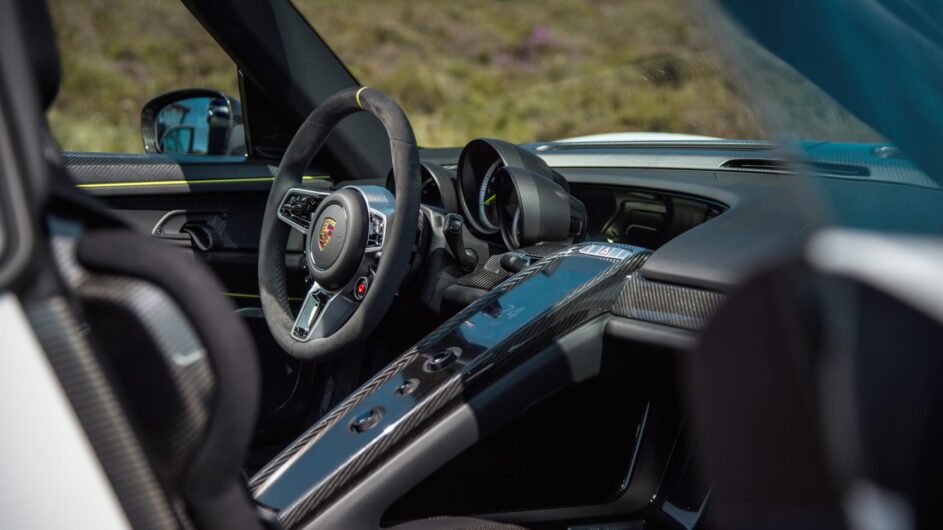
The 918 Spyder features one major difference from its hypercar rivals, and that’s hinted at in the model’s name. Rather than a fixed roof, the 918 has removable roof panels that can then be stored in the front luggage compartment and doing so transforms the 918 experience – and allows drivers to appreciate the contrast between electric running and the Porsche’s vicious 4.6-litre V8.
And naturally, as a Porsche, everything is beautifully trimmed and built with precision. You get a little extra comfort in non-Weissach cars, with extra sound insulation and plusher seats, but those opting for the faster car will hardly skimp on luxury.
Design
When evo tested the 918 Spyder back-to-back with the McLaren P1 in issue 200, we noted that it shared the ‘car-as-art’ execution of its predecessor, the Carrera GT. The family ties are clear to see, and it nails a balance between looking clean and unadorned, and looking exquisite and expensive.
That car was also resplendent in a Martini Racing livery, one of several options available to 918 buyers to personalise their cars and a no-cost option on the Weissach Package. Personal taste will dictate whether you take the plunge on the graphics options – the evo office is split – but they certainly help the car stand out further.
This article originally appeared at evo.co.uk
Copyright © evo UK, Dennis Publishing


